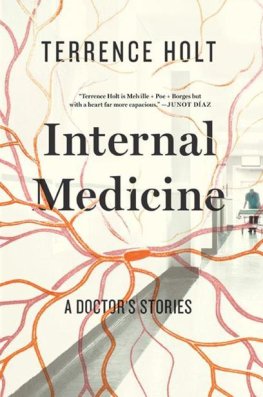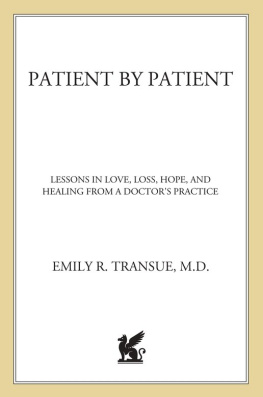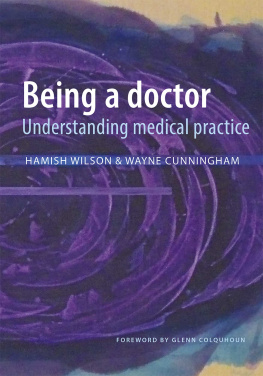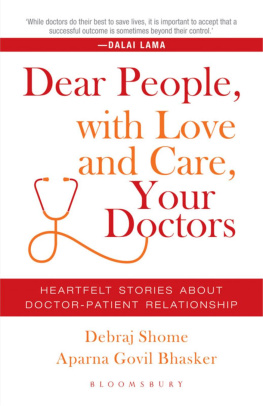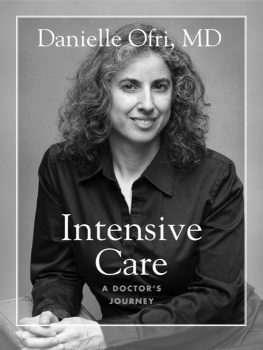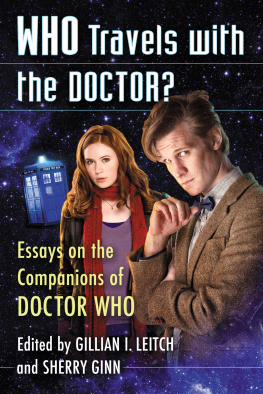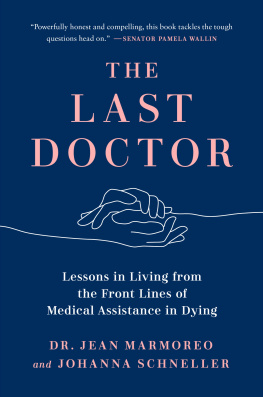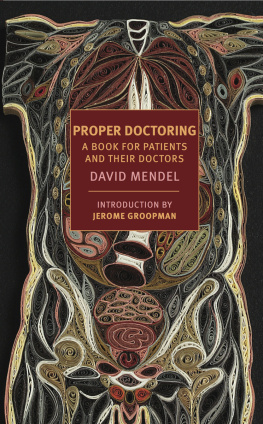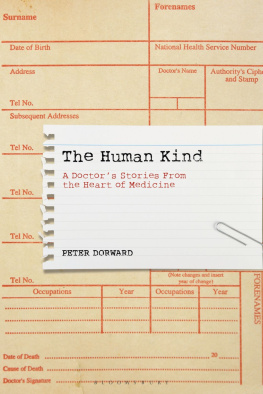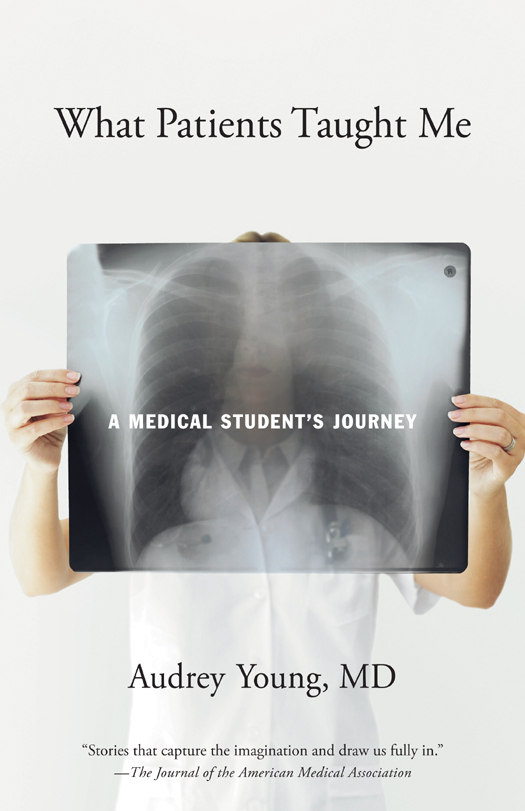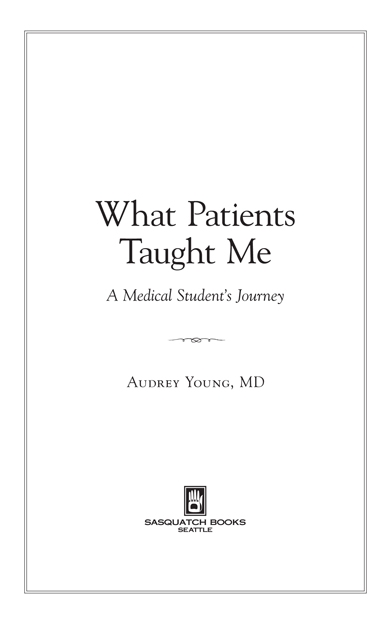Copyright 2004 by Audrey Young
All rights reserved. No portion of this book may be reproduced or utilized in any form, or by any electronic, mechanical, or other means without the prior written permission of the publisher.
Published by Sasquatch Books
Distributed by PGW/Perseus
Cover design: Judith Stagnitto Abbate / Abbate Design
Cover photograph: Copyright 20022006 Veer Incorporated; photograph by Stockbyte.
Library of Congress Cataloging-in-Publication Data
Young, Audrey, M.D.
What patients taught me : a medical students journey / by Audrey Young.
p. cm.
eISBN: 978-1-57061-658-7
1. Young, Audrey, M.D. 2. Medical studentsUnited StatesBiography. 3. Medicine, Rural. 4. Physician and patient. I. Title.
R729.5.R87Y68 2004
610.92dc22
[B]
2004048249
Sasquatch Books ~ 119 South Main Street, Suite 400
Seattle, WA 98104 ~ (206) 467-4300
v3.1
For my parents, Peter and Sioeling Young
Contents
When you bring first-year medical students to the wards, you tell them the patient is at the center and they look at you like youre crazy. They cannot conceive of how the patient could not be at the center. The patient is the reason theyve chosen medicine. I want to tell them, wait until third year.
E RIKA G OLDSTEIN, MD
A SSOCIATE P ROFESSOR OF M EDICINE
C HAIR , I NTRODUCTION TO C LINICAL M EDICINE
U NIVERSITY OF W ASHINGTON
Preface
T hese are true stories. The identities of actual patients and doctors have been slightly altered. Stories like these happen every day in remote places and less often in the hospitals that produce tomorrows physicians.
Thirty years ago the University of Washington bravely began sending medical students to work alongside small-town general physicians in hopes of reversing the steep drop in rural doctors. The experiment raised eyebrows across the academic establishment. Prominent teaching physicians predicted the medical school would turn out sub-par graduates, but the rogue university pressed ahead.
By the time I enrolled at the University of Washington in the mid-1990s, more than one hundred physician groups in the remote Pacific Northwest were teaching medical students. I received most of my clinical training in these rural places. The work was physically taxing and the depth of human suffering often intense. My experiences were never impersonal, though, as is commonly the charge in medical training these days.
At first I wrote about patients to process days filled with sick and dying people. At night in the student apartment I sat at my boxy old Macintosh computer with a five-inch screen and tried to come to terms with a child with cancer, a grandmother with eroding memory.
Later in medical school, I volunteered at a hospital in southern Africa and emailed group letters back to the United States about the impossible conditions there. A friend and fellow medical student who had worked with me in rural Montana emailed me back, Keep writing. This could become something. Here was my spark.
I wrote and rewrote. Finally I recognized that the only thing to really make doctoring a human act is time spent with patients. Patients teach things that the wisest and most revered physicians cannot, and their lessons are in this book.
C HAPTER 1
Bethel
T he first call crackled across the emergency scanner at midnight.
This is Aniak, a voice reported. I have a twenty-one-year-old male, seven minutes status post gunshot wound to the left ear. Unconscious. Pupils 2 mm on the left, 3 mm on the right. Blood pressure is 178 over 100.
How is he breathing? the attending doctor asked, her eyes fixed to the floor.
Breathing thirty a minute, oxygen sat is 100 percent on a 6 liter mask.
Is he moving anything? Legs? Fingers? The doctor raised an impatient eyebrow.
She looked expectantly at the scanner, a silver metal grate on the wall. She was tall, wire-thin, and she wore hiking boots. We were standing in the emergency departments small triage room, a stale space with shelves of textbooks worn at the spines.
No, not responding at all, the health aide said. I have IV fluids going and gave a dose of ceftriaxone.
A moment later he added, Awaiting medivac.
Were working on it, she said. Your patient needs to get here now.
The attending doctor exhaled audibly, then picked up the telephone and asked for the medivac pilot. I shifted nervously in the hot room as I imagined the health aide eating with his family when the loud cracking gunshot sounded through the village. The aide stood automatically and noise drained from the room. He went out the door and up a gravelly hill. In the clinic, he switched on the waiting room lights. The hallway leading to examination rooms in back was dark and faintly blue in the night.
Moments later a low-riding pickup truck stopped at the clinic door with a young Eskimo man lying in the back. The driver vaulted out of the cab. Together, aide and driver carried the man into the waiting room and arranged him on a gurney on the floor. The patient had been drinking with his cousins when he walked away for a moment, laughing, and shot himself in the left ear with a .22-caliber handgun. Now clots of dark blood stuck in his hair and quick breaths popped from his mouth. His right eyebrow was split open where the bullet exited.
The health aide came on the scanner again.
Ready for transport. Awaiting medivac, he repeated urgently.
A pilot wearing a blue jumpsuit came in the triage room. The pilots face was shadowy with stubble, his movements quick and automatic like the medics and doctors.
What do you think? the attending doctor said.
We cant, the pilot said.
The patients rapidly going downhill, the attending protested. Hes got to get here or to Anchorage.
Its not safe, the pilot said. They swapped tense glances, then he walked to the scanner and pushed the red TALK button.
Aniak, this is medivac. We cant land in this weather. The cloud ceiling is too low.
The report came back rushed and desperate from the village one hundred miles upriver: Pupils 2 mm on the left, 4 mm on the right. Blood pressure 180 over 100. Heart rate 54.
The attending stepped in quickly and said, What fluids are you running?
Lactated Ringers wide open, about a third of the bag in.
Slow that down to about 100 cc per hour.
Okay, copy.
The pilot turned to the attending and said, National Guard wont fly either.
Someone has to get him or hes going to die, she said.
The pilot tilted his head to the side for a moment, holding her gaze. Someone could die just trying to land the airplane, he said. After a moment he added, Ill make some calls.
When he checked back twenty minutes later, the attending and I were in the operating room with a boy whod split his lip open straight down to tooth. The pilot reported that one by one, local private carriers had refused the flight to Aniak.


